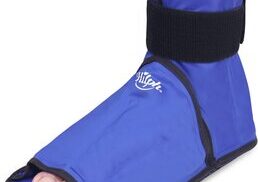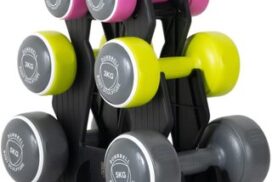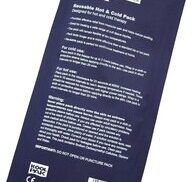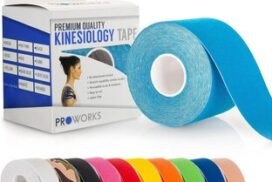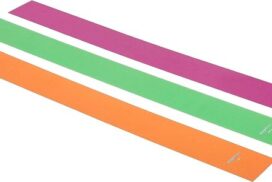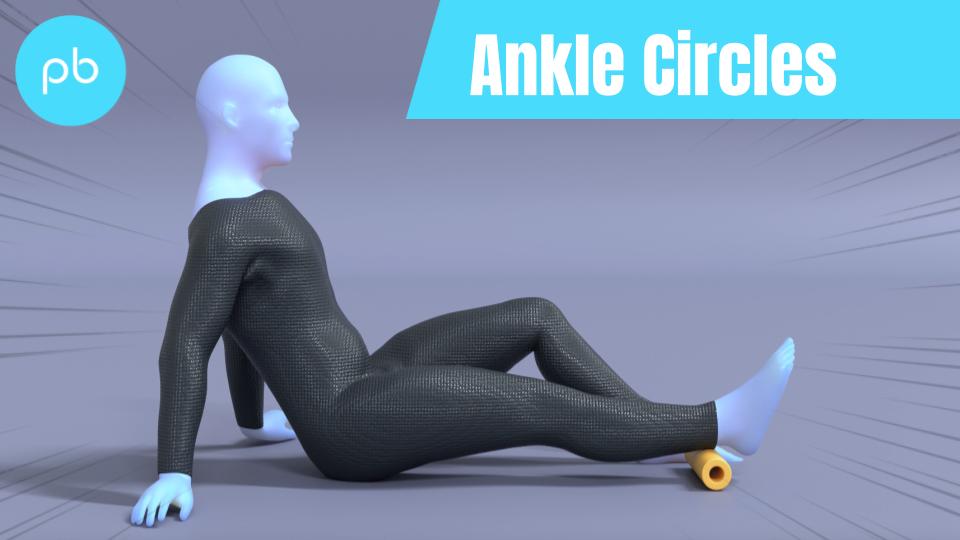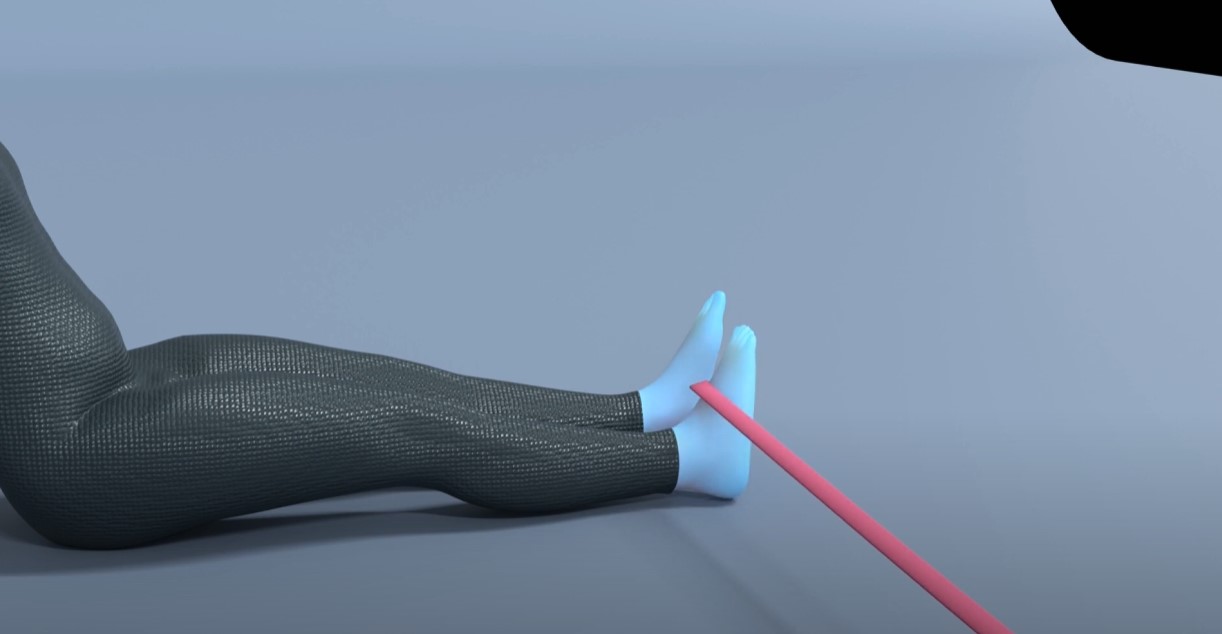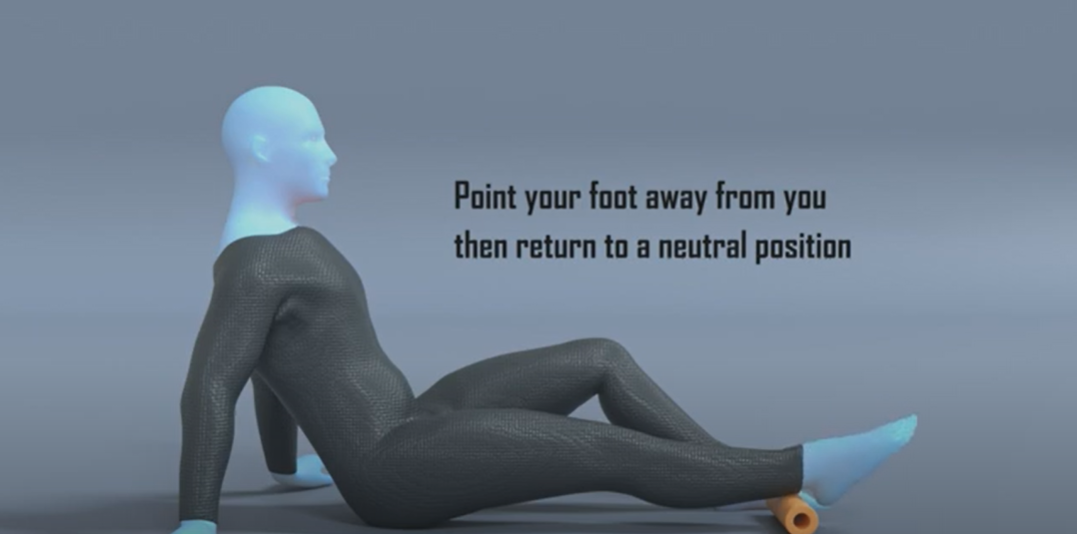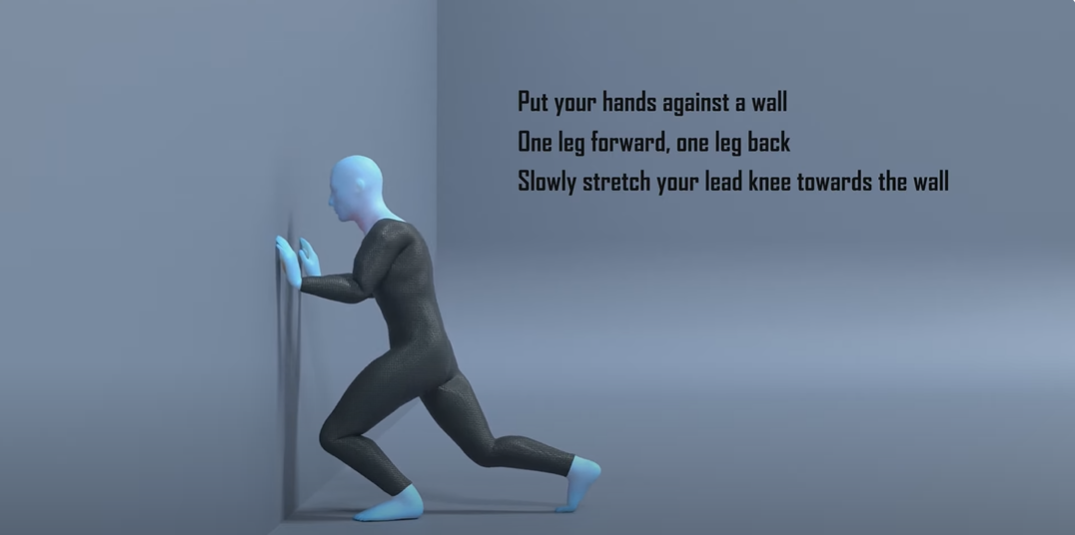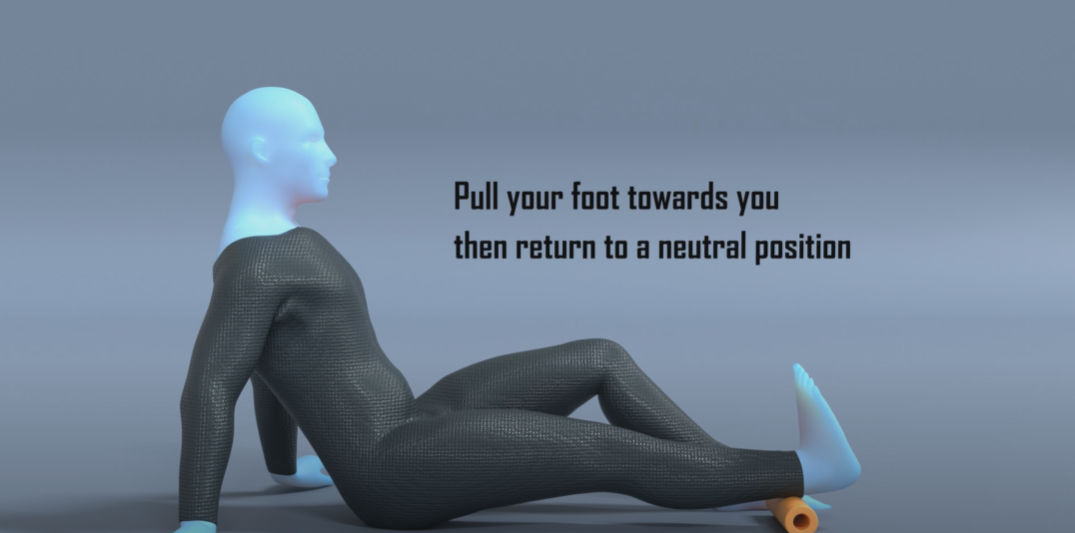
Welcome to your free report covering the diagnosis, management and treatment options, exercises and equipment that could help in rehabilitation. Scroll down to read more.
Diagnosis
Tibialis Posterior Tendinopathy
From the specific resisted testing you performed it appears you may have a tibialis posterior tendinopathy. Your tibialis posterior is a muscle on the inside of your lower leg and is behind your ankle bone. its role is to help with some other muscles to move your foot downwards (plantar flexion) and inwards (inversion). Tendinopathy is when the tendon, which attaches muscle to bone, becomes irritated and causes pain when they are put under a tension greater than what they can tolerate. Tendinopathies are generally caused when there has been an increase or change in activity to what the tendon can handle. This is because the tendon can't adapt quickly enough to this increase or change and becomes irritated causing pain.
The question at the start where you answered that the symptoms started after a specific event could have been the trigger to cause these symptoms. You experienced pain when we tested you walking on your toes and then at then moving your foot inwards. The first test had a bias on testing your Achille Tendon and the final movement we changed the direction slightly to bias the tibialis posterior, and this test caused your irritation. The Achilles and tibialis posterior sit very close to each other and can at times be tough to figure out which tendon is causing discomfort, however with pain on the inside of the ankle it is more suggestive of tibialis posterior tendinopathy. Interestingly some of the movements both these tendons do is similar, and as a result the rehab programme to help recover from them is also very similar. So the exercises in this programme will still give you benefit if you did also have some issues with the Achilles that the testing couldn't pick up, and in fact the exercises used to treat both are very similar.
One area we need to review is 'how' this started. At the start you mentioned that there was no specific trigger for the cause of pain, with no change in the type or intensity of your training. Generally tendinopathies develop due to change in load to which the tendon can handle. Understanding this trigger is key to make sure we don't make the same mistake again. If this isn't the cause it may be due to a general lower limb weakness somewhere else in the leg which is causing an overload onto the Achilles. So it would be helpful to have a rethink on the weeks leading up to your injury to understand if there has been any change in your activity.
The encouraging thing to remember is that tendinopathies generally recover well when a good rehab programme is followed. The important points to follow with tendinopathies is that after an initial short period of relative rest by avoiding the aggravating activity, we need to slowly start loading the tendon again so that we can return to performing all the activities we wish to. Tendinopathies improve with the vast majority of people returning to the activity they want to, but it takes patience and time to make sure the tendon is fully adapted without repeated irritation.
Management
Click each phase heading to see the progression of your management programme.

This phase is normally the first 24-72 hours after the event that has triggered your symptoms and its aim is to settle any swelling and pain whilst maintaining the range of motion and function you have. You may find the steps in this phase not applicable due to the level of movement and pain you have, or you may find only a number of points helpful. If you have no swelling and full range of movement of the ankle in all directions, you could simply miss this step and start on Phase 2.

RICE
RICE stands for Rest, Ice, Compression and Elevation. These steps are helpful for when you have an injury in the acute phase to help reduce pain and assist with the healing process.
Rest: You need to reduce the activity level you are performing and let your body have time to heal. The aim here is to pace your activities throughout the day and cut back on anything unnecessary or that particular increases your symptoms.
Ice: This can help reduce the pain you are experiencing and also reduce some of the swelling if you have any. Using some frozen peas wrapped in a damp cloth for 20 minutes will work well here and do this every hour or two. Do not apply the ice directly to your skin, make sure you have a barrier which is preferably damp, and keep an eye out for any ice burns onto the skin. If you notice this stop immediately.
What can be helpful here is having a specifically designed ice pack you can reuse over and over again. You still need to have that damp cloth as a barrier with these packs as well.
Compression: This relates to the use of the ice being compressed onto the ankle region to assist with the swelling. This can be achieved by simply wrapping a cloth around your joint, but more bespoke equipment offers this ability which would be more comfortable and effective, such as an ankle ice pack.
Elevation: Having your ankle rested on an object and raised above your hip will help reduce the amount of swelling in the area. This may help reduce some of the symptoms you are experiencing. Aim here for a similar time frame as applying ice and go for up to 20 minutes and for your foot to be above the level of your heart.. This can simply be achieved by laying down. Do not compress and elevate at the same time, as the volume of fluid returning towards your heart may put too much pressure on it.
Medication
In the initial phase the use of over the counter medication may be an option. Medications such as simple pain relief and anti-inflammatories may allow this acute phase to be more manageable. Please consult your family doctor if you have any concerns with this impacting your current medication, or if any medical history may be impacted by the option of including this medication.
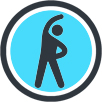
Exercises
As you are able to move the ankle well and also load it to a reasonable level, your aim here is to maintain the movement you have and ensure it is full.
Given the large range of movement available at the joint we have to make sure that all directions are worked on. You may find it helpful to do these exercises in a circuit type fashion, where you do exercise 1 for 1 set, followed by exercise 2 for 1 set, then exercise 3 for 1 set, and then restarting.
| Exercise | Frequency | |
| Knees over toes - loaded or unloaded | 30 seconds x 2 sets | 3 x daily |
| Toe Pointing | 30 seconds x 2 sets | 3 x daily |
| Big Ankle Circles | 30 seconds x 2 sets | 3 x daily |
Some points to consider with these exercises:
- There may be some discomfort with these movements but it should become easier over time.
- Try and perform them little and often. Don’t get too focused on duration, sets and frequency. Initially it may be tough to perform the exercise for 30 seconds and 2 sets could be discomforting. Just slowly increase how long and how often you do them over the following weeks.
Pain levels and exercises: mild discomfort is ok during these exercises as long as the pain doesn’t spike above a 5-6/10 and as long as it does not linger for longer than 2-3 hours following the activity.
Cardiovascular exercise: it is also important here to try to maintain good levels of CV fitness in this phase for overall health without putting too much pressure on the affected body part. Ideas such as gentle swimming or stationary cycling could be of benefit.
This would be roughly the first 2-4 weeks of your recovery.

Education
The aim here is to start loading your tibialis posterior tendon progressively. Tendons love load but it needs to be the right level for what they can tolerate for that period of time. You want to reintroduce load to the tendon and progressively load it so it can tolerate more. This ability to tolerate more load will mean you can perform more tasks day-to-day and eventually return to your sporting activity of choice.
Remember the movements that the tibialis posterior is involved in is in pointing of the toes downwards and inwards, so we need to make sure the programme addresses both these directions. The tibialis posterior is located very closely to the Achilles tendon, and the movement generated is also very similar. Because of this it can at times be tough to know whether it is the tibialis posterior or Achilles causing the issue, but the treatment is very similar and thankfully this programme addresses both so you will be covered.
Tendons can take up to 12 weeks to recover and in some circumstances longer, depending on the severity and also the individuals specific activities they want to perform. Whilst you are rehabilitating your tendon you need to be cautious not to overload your tendon and cause a spike in pain and also irritation to the tendon. This may result in a backward step and delay in your recovery. Equally important is not loading the tendon enough. It is a balance to create and unfortunately you won’t get it right every time, however as long as you don’t keep getting it wrong, and each week you are loading the tendon more, then you are heading in the right direction.
The next question you need to start asking is “why did this occur?”. This is really important so you can understand what you did to trigger such a reaction. Sometimes this can be really obvious but other times it needs a bit more thinking. If you play a specific sport, have you increased the frequency per week of doing this sport, the length of the session, or the intensity of the sessions? Did you recently change any equipment or technique? Equally some basic DIY or home activities can cause tendinopathy, even something as simple as going for a long walk or up and down the stairs more than normal. If you aren’t used to doing the activity and suddenly introduce it into your daily life, your tendons may not have time to adjust to the demands required of them.
The ‘why’ is important so that we can adjust things accordingly when we return to the activity and make sure we don’t repeat the same thing.
You can continue any exercises from the previous phase but you may find they have less value as you progress through your rehabilitation.
You want to make sure you get full range of motion and not to over do things initially.

Exercises
Even though from the testing you performed you were able to tolerate a high level of activity, it’s important we have a good base of strength and don’t neglect the basics. This will help us as we move through the phases and intensity. Another benefit of performing exercises which are hopefully relatively easy, is that it allows some time for any irritation in your tibialis posterior to settle whilst it still gets some load through it.
The aim of these exercises is to introduce some basic strength work. Remember to start off easy and only increase the intensity each week once the symptoms have settled.
Traditionally with tendinopathy you would perform the exercise eccentrically only. This means you focus on the lowering down portion of the movement, where your tendon is lengthening under load, and do not perform the upwards movement on the affected area. The evidence on performing the exercise focusing just on the eccentric movement is good, where it has been shown to give better outcomes than doing both the up and down aspects of the movement. However, you do still get a positive change from doing the up and down movements, with the difference being minimal in terms of outcome. It is also easier from a coordination point of view to perform, and in my experience people adhere to them more than those who have to do purely eccentric exercises.
So in the programme below if you wish to do eccentric loading wherever you see a calf raise exercise you can do, with no change in reps or sets needed. But equally, if you do not wish to, then you can perform the up and down movements of this exercise, and you can be rest assured that you will still get a positive outcome from the programme.
| Exercise | Frequency | |
| Ankle Inversion with Resistance band | 15-20 reps x 2 sets | 2 x daily |
| Single leg balance | 30 - 60 secs x 2 sets | 2 x daily |
| Single leg isometric calf raise | 30 seconds x 2 sets | 2 x daily |
Some things to consider with the exercises:
- The exercises in this phase are to reintroduce some progressive load work onto your tendon. We have purposely put the single leg isometric calf raise last as this exercise may be the hardest so having a few exercises warm up before may help to complete this exercise.
- The movements of exercises 1 should be performed with as much range as possible.
- If you find with the balance exercise that it is becoming too easy, you can make things harder by performing this on a pillow or folded up towel to make things slightly unstable. However make sure whatever progression you add in that you remain safe throughout. Another progression if the pillow and towel is not challenging enough, is to simply close your eyes. This reduces the information you receive in order to help maintain your balance so your muscles have to work a little harder. Again make sure you are in a safe environment to build up to this level of difficulty.
- You may find it helpful to do these exercises in a circuit type fashion, where you do exercise 1 for 1 set, followed by exercise 2 for 1 set, then exercise 3 for 1 set. Make sure you have a rest after exercise 3, of at least 1 minute, before restarting at exercise 1.

Medication
You should expect to see the usage of medication reduced as you move through this phase. If you require medication to get you through the exercises, or immediately afterwards, perhaps you need to reduce the reps or duration of some of the exercises so that it becomes a little easier.

Acupuncture
The evidence for acupuncture is poor in improving healing time for tendinopathies. It can increase blood flow to the area which can help with the healing process, but so does performing the exercises we have mentioned. There is some evidence of improving pain, so it may be an option if that is your limiting factor and you have tried other options to reduce your pain without success. However, using acupuncture on its own is unlikely to improve symptoms, as a tendon's job is to absorb load, so any passive treatment is not going to help with this.
Massage
Similar to acupuncture massage on the calf muscles may help blood flow to the area and offer temporary reduction in tightness to the area, however similar effects can be generated with simple movement and stretching. You also do not want to generally massage an irritated tendon as the evidence on what this is doing, and the effect it has on performance is conflicting. The evidence again shows that massage alone will unlikely help with tendon performance, but used alongside an exercise programme can help reduce symptoms.

Foam Roller
A foam roller is used to offer self massage. They are marketed as a way to get similar results of a massage but without the reliance of a masseuse, making it more practical and cheaper for people to use. They are very popular within the fitness industry and with a lot of professional athletes using them within their warm-up and rehab routines. The idea is that similar to massages they increase blood flow to the area and also help with mobility by reducing muscle tension. Unfortunately the evidence on them having an effect on muscle length is minimal, and any change is short term, and the link that they reduce injury or improve rehab times is simply missing. Again similar to acupuncture and massage, a foam roller can be used alongside an exercise programme to help with symptoms, but used on its own will not improve tendon performance.
Strapping
There is an option to apply some strapping on your tibialis posterior which may help reduce your symptoms when performing the exercises, or to be used on certain activities which cause irritation. Similar to some of the other treatment options highlighted above the strapping won’t increase the strength of the tendon but reduce the symptoms it generates. The tape is called ‘Kinesio Tape’ and helps support the muscles and tendons in that area, and stretches with the movement. You can leave this tape on for a number of days but if you have particularly sensitive skin it could cause irritation. It may be helpful to put a small trial patch somewhere visible to monitor for a day or two before applying. If you do get a reaction, remove the tape immediately.
If you feel you are struggling to progress, or you feel your rehab is a little stagnant, or that general daily activities are still irritable, then it may be helpful to try this alongside the exercise programme.

Symptoms
During this phase you should start noticing more times in the day when you are pain free, however it is not uncommon for there to be sharp spikes in pain if you are doing a specific activity. This will improve and the activities which cause irritation should become less. If you continue to perform activities which consistently aggravate the tendon, it will continue to cause you pain and perhaps be affecting the end stage of healing. You need to alter the activities in some manner that are causing irritation until you have moved further along in your healing, and increased the strength in your tendon.
During the rehabilitation programme you may find that specific exercises or activities of daily life aggravate the tendon and you become sore for a couple of hours after. This is ok as long as the pain, is again below 5/10 on the pain scale and as long as it settles within 2-3 hours. If you are sore for the rest of the day, or particularly sore and limping the next morning this means you have done too much for that tibialis posterior tendon to cope with at this stage.
If you are struggling to wean off medication or perform the exercises in this phase it may be helpful to be reviewed by a medical professional to ensure you are on the right path. If they confirm it is an tibialis posterior tendinopathy then you can continue on the phases in this rehab programme.
In this phase we are looking at between 4 to 8 weeks following the injury or start of your symptoms.

Education
Similar to Phase 2 the timelines here are merely a guideline and may vary. You may find that you are able to start this phase before 4 weeks if the symptoms have settled and you aren’t challenged by the exercises.
The aim of Phase 3 is to increase the intensity of the rehab exercises, specifically the tibialis posterior tendon loading exercise. You should now be looking at returning to full daily activities and depending on the severity of the tendinopathy and your chosen hobbies, a return to sport also.
You should at this stage have full range, be able to perform the exercises from Phase 2 with ease, and not reliant on any pain medication to perform tasks.
For the vast majority it may be the case that we need to improve the strength of our tibialis posterior for some very specific day-to-day activities related to a hobby or our work. Others may have a specific long term goal in mind, such as returning to running or another lower limb activity.

Exercises
The focus on Phase 3 is to move onto single leg loading of the tibialis posterior. The other two exercises aim to ensure general lower leg strength along with introducing some low level impact work. It may be the case you do not need to do the third exercise here for what you need to return to, in which case you can simply replace it with the single leg balance exercise from the Phase 2.
If you remember the principle of tendinopathy rehabilitation at the start of this programme, you want to progressively load up the tibialis anterior slowly over time with no sudden increases or spikes in intensity or frequency.
| Exercise | Frequency | |
| Single leg calf raise | 15-20 reps x 4 sets | 2 x daily |
| Single leg sit to stand | 8-15 reps x 4 sets | 2 x daily |
| Double leg hopping | 30-60 seconds x 4 sets | 2 x daily |
Some things to consider with the exercises:
- You may find performing the exercises from Phase 2 acts a nice warm up before attempting these exercises which are slightly harder.
- For the first and third exercise if you struggle with the reps, duration, sets or frequency, reduce the amount down for a week or two and then slowly build back up.
- If you struggle with the single leg sit to stand, raise the height from which you perform this movement from, this will make it easier to perform. If your balance is your limiting factor here, you can gentle hold onto something to give you some support. .
- You may find it helpful to do these exercises in a circuit type fashion, where you do exercise 1 for 1 set, followed by exercise 2 for 1 set, then exercise 3 for 1 set, and then restarting after a break.
The final phase may not be necessary for everyone, however if after completing phase 3 you are finding you are still not able to complete your activities or sport of choice pain free then it may be best to continue, especially if you need to hop or run.
In this phase we are just continuing the process of increasing the progressive load onto the tibialis posterior. By this point you should be able to complete the exercises in phase 3 with good form and no increase in pain.

Exercises
| Exercise | Frequency | |
| Single leg calf raise with weight | 15 - 20 reps x 4 sets | 1 x daily |
| Single leg hopping | 5-8 reps x 4 sets | 1 x daily |
Some things to consider with the exercises:
- How you carry the weight on exercise 1 is completely up to you. This could be in a backpack or dumb bell. The same principle applies on progressive loading, so for week 1 start with for example 5kg, and slowly build up from there.
- For exercise 2 if you are struggling, one way to break the movement down is to jump up onto a small step. This way you avoid landing onto the foot and your tibialis posterior having to eccentrically (lengthen under load) control your body weight. You also want to make sure that you perform this exercise with good ankle movement, and not reliant on the knee and hip compensating to generate the movement. A good way to check is to ask someone to view you doing this on your unaffected side first and then comparing to the affected side, or simply film on your phone and playback the video. You should hopefully see similar movements between the two sides.
- You may find it helpful to do these exercises in a circuit type fashion, where you do exercise 1 for 1 set, followed by exercise 2 for 1 set, and then restarting after a break. If there are any particular exercises from Phase 3 you want to include as you still find them beneficial, you can continue them into this phase.
- If you intend to return to running, complete at least 2 weeks of these exercises and then follow our run/walk programme alongside these exercises as you progressively build up.
Return to Sport or Activity
As a general rule, try and aim for two pain-free training sessions at a reduced duration or intensity before increasing.
For example, if you normally play 60 minutes of tennis, aim to play for 30 minutes in a non-competitive environment for two non-consecutive days.
Having a day's rest between sessions allows you to have appropriate rest and for your body to repair and become stronger.
Once you have found a duration or intensity you can tolerate with no flare up, aim to increase the next session by 10%. This can seem like a slow and conservative process however the research has shown this is the optimum level of increase to avoid an overuse injury. Increasing duration or intensity by more than 10% significantly increases your chance of injury, so only increase one or the other by this amount. As you will have been away from your sport for a number of months, you will have lost some of your fitness conditioning in this time and will need to build up slowly.
Over time you will be able to slowly return to your pre-injury level of activity without regressing back to any acute flare-up.

Pacing
At this stage you should find you can do more day-to-day activities pain free. The temptation here is to go a bit overboard. A nice reminder to pace activities so that you don’t over do it, and that you spread these activities out as much as possible throughout the day.
